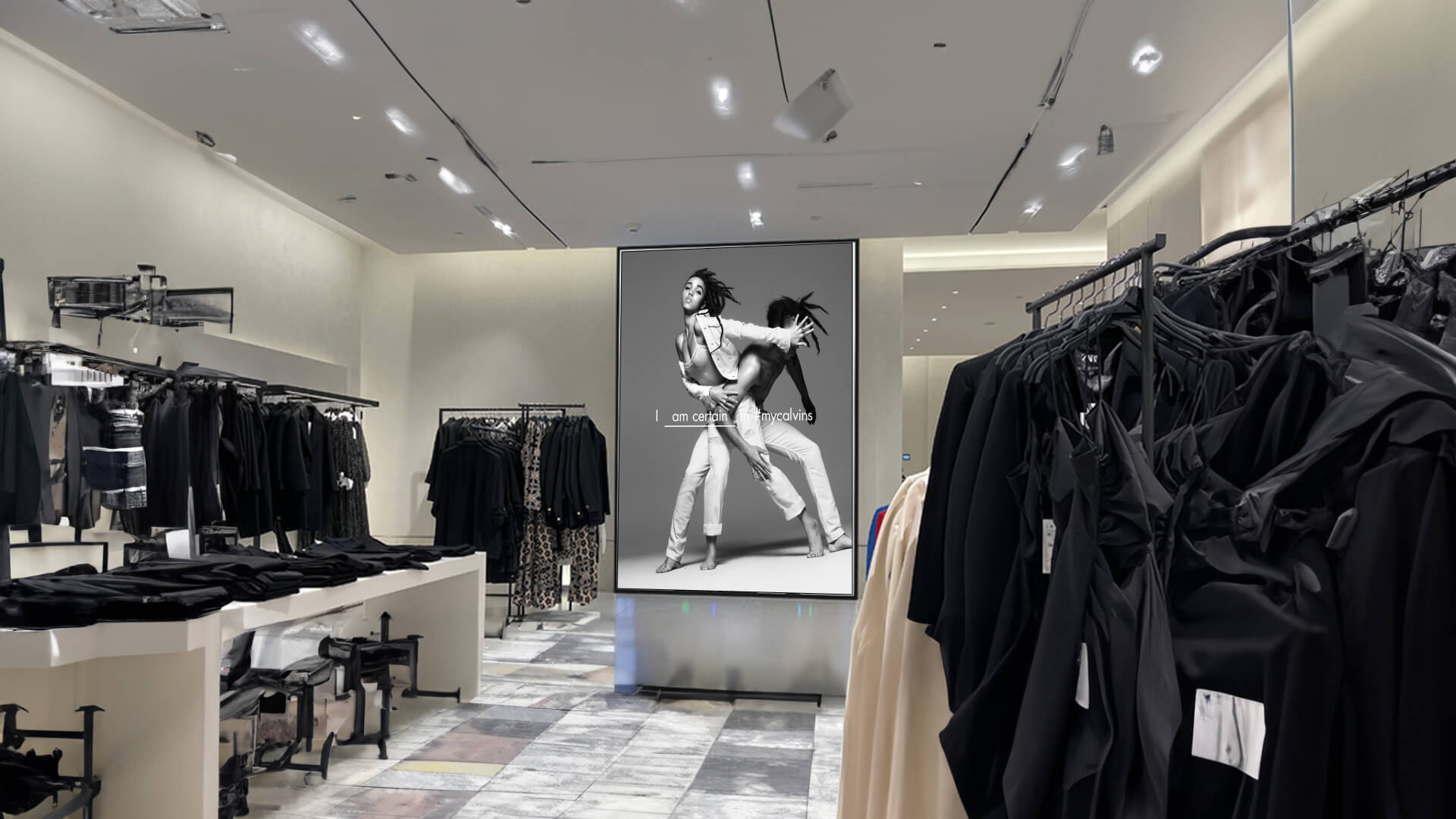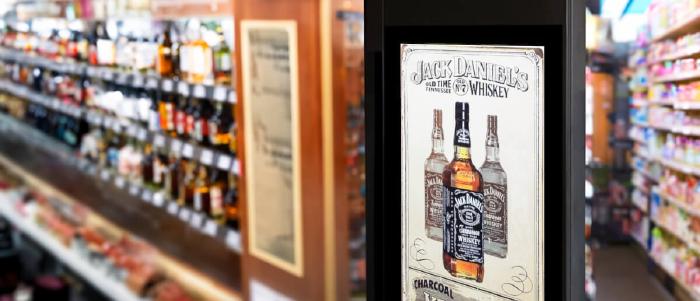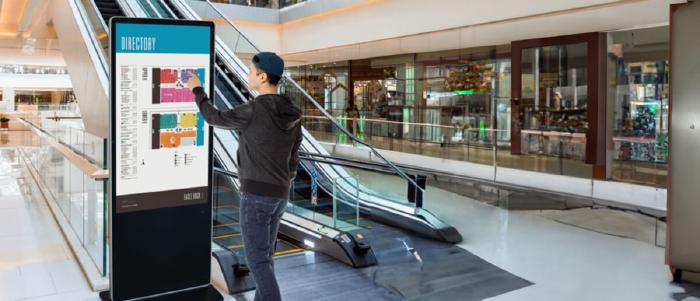
Dec 6 2023
5 min read


Oct
In the age of bridging the bar between digital and physical spaces, social media digital signage emerges as the most adaptable trend. This innovative intersection of social media and digital signage has helped amplify brand messaging, facilitating an interactive communication channel between brands and consumers. From bustling city squares to cozy cafes, signage is redefining traditional advertising paradigms, offering many uses beyond mere promotion.
Social media signage is a digital communication strategy that combines social media content and feeds into electronic displays, mainly utilized in public domains, retail settings, and event venues.
Suppose a fashion house initiates an online campaign, encouraging customers to share their summer looks featuring items from the new collection. Customers can use a specific hashtag, say #summerchic, when posting their photos on platforms like Instagram, Twitter, or Facebook.
This technology is crucial for:
Audience engagement: It captures viewer attention by featuring user-generated content and encouraging social interactions, creating an interactive visual experience for the audience.
Personal branding: The strategy facilitates the portrayal of brands in a more relatable and authentic manner by presenting real-time social proofs and enabling direct community engagement, bridging the gap between brands and their target communities.
Digital signage can be put to great use via various social media integrations. Here are five ways in which it is useful.
1. Facilitating real-time engagement: Signage enables brands to establish a two-way communication channel, allowing them to interact and engage with audiences through live feeds and updates, fostering a more immediate and dynamic interaction.
2. Promoting user-generated content: The strategy showcases and encourages creating and sharing user-generated content, thereby nurturing a vibrant and engaged community centered around the brand.
3. Enhancing trust: By showcasing fundamental customer interactions, reviews, and content, social media signage lends authenticity to the brand, building trust and credibility among potential customers and visitors.
4. Amplifying marketing efforts: Integrating online content with digital signage amplifies marketing messages by displaying them via social media walls, maximizing reach and impact.
5. Optimizing content relevance: The ability to update content dynamically ensures that the displayed messages are always relevant, timely, and aligned with the brand’s and the audience’s current interests and needs.
Here are some big-ticket brands utilizing digital signage to showcase their feed and engage potential audiences:
Marc Jacobs, a renowned fashion brand, ingeniously integrated social media and digital signage in their pop-up store, known as “The Tweet Shop,” during New York Fashion Week. The store didn’t accept traditional currency. Instead, customers could purchase items with social currency by tweeting, posting on Instagram, or using other social platforms with the hashtag “#MJDaisyChain.”
The posts were then displayed on digital screens within the shop, creating a vibrant and interactive environment. This campaign successfully combined the physical and digital worlds, creating in-store and online buzz. It increased the brand’s visibility on social platforms during the fashion week and enhanced customer engagement by rewarding them for their social interactions.
Coca-Cola, a brand synonymous with innovative marketing, created the #ShareACoke campaign in 2012, standing out as a particularly notable instance.
The strategy was simple yet profoundly impactful: display user-generated content across interactive kiosks. When customers shared their personalized coke bottles using the tag on Facebook or Twitter, their posts were not confined to the digital sphere. They were showcased in electronic screens across stores, creating a tangible connection between the online and offline worlds.
The outcome of this strategy was twofold: enhancing in-store engagement and online interaction. By featuring real customers and their stories, the brand enriched the in-store experience and fostered a sense of community and connection among its consumers.
Calvin Klein has been known to utilize user-generated content through social media effectively and digital signage in their physical stores.
The brand encouraged customers to share their pictures wearing the products on social media using specific hashtags, such as #MyCalvins. They then displayed selected user-generated content on digital screens in their flagship stores, creating a direct interaction between the online and offline customer experience.
This strategy enhanced the in-store experience by featuring real customers on their displays. It encouraged further online interactions as customers were eager to share their content to be featured in Calvin Klein stores

Integrating social media with digital signage has revolutionized communication and advertising by providing dynamic, interactive, and real-time content. However, this technology has a few bottlenecks, particularly in content moderation, technical stability, and data privacy.
1. Content moderation
Issue: Ensuring content is appropriate, non-offensive, and compliant with guidelines.
Impact: Inappropriate content can damage an organization’s reputation and incur legal penalties.
2. Technical issues
Issue: Ensuring stability, uptime, and functionality of digital signage systems.
Impact: Technical issues can disrupt communication and cause financial losses.
3. Data privacy concerns
Issue: Protecting user data and ensuring content display compliance with data protection laws.
Impact: Data breaches or non-compliance can damage reputation and result in fines. Having a secure digital signage system helps mitigate such risks.
1. IT support
Approach: Establish dedicated IT support or utilize third-party services for system management.
Benefit: Ensures continuous operation, resolves technical issues promptly and enhances system reliability.
2. Adherence to data regulations
Approach: Adopt stringent data protection policies and practices, ensuring compliance with regulations like consumer privacy acts, etc.
Benefit: Protects user data, reduces legal risks, and boosts consumer trust.
User-generated content bridges the gap between online and offline worlds, creating an authentic, interactive brand experience in physical spaces. Even with challenges like managing content and protecting data, the path forward is full of opportunities. This approach promises a future where brands and consumers can explore and create together in a space that blends interactions.
Take complete control of what you show on your digital signage & how you show it.
Start Free Trial Schedule My Demo
Dec 6 2023
5 min read

Aug 4 2023
6 min read

Jul 27 2023
7 min read

Jul 19 2023
7 min read